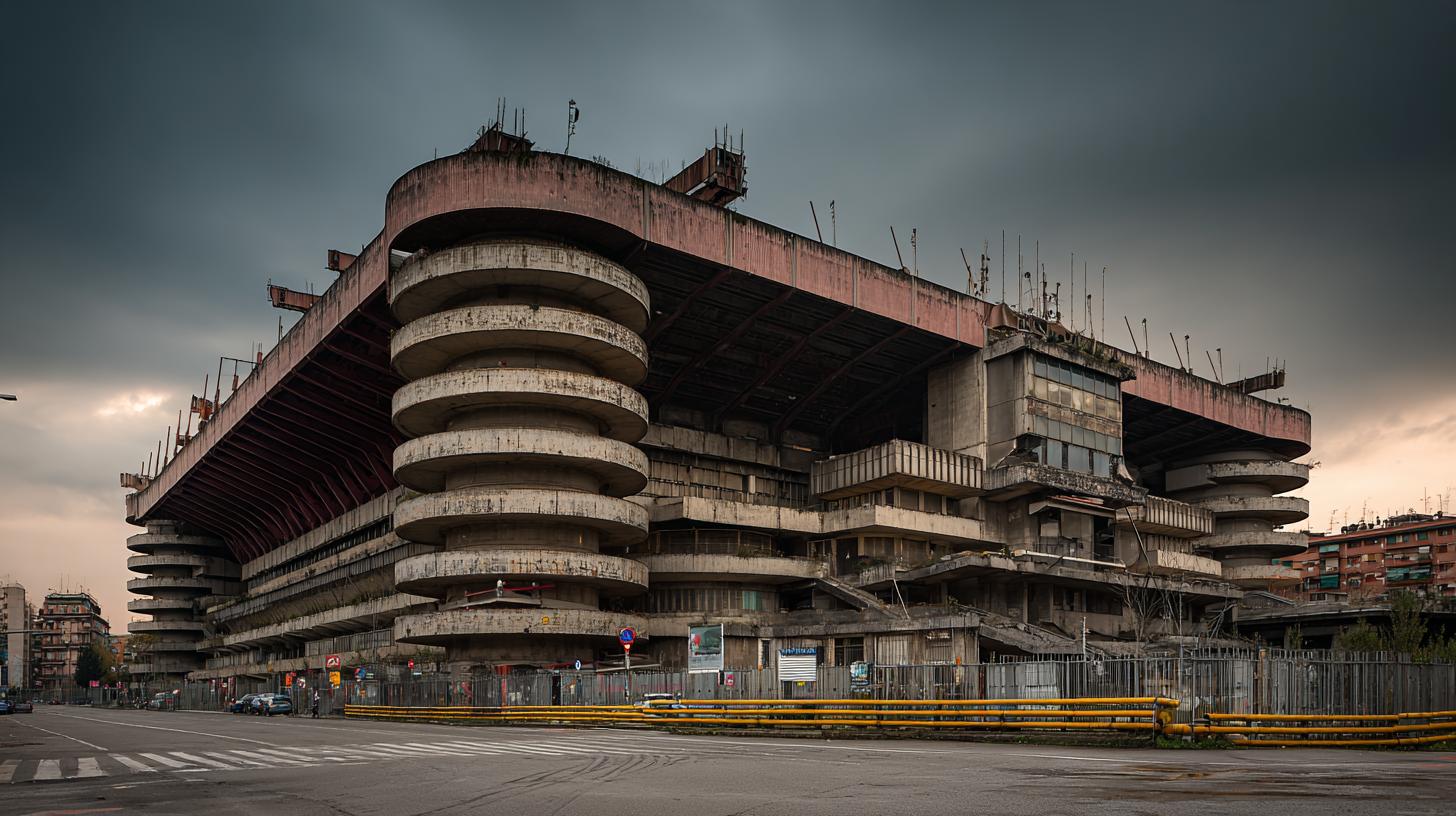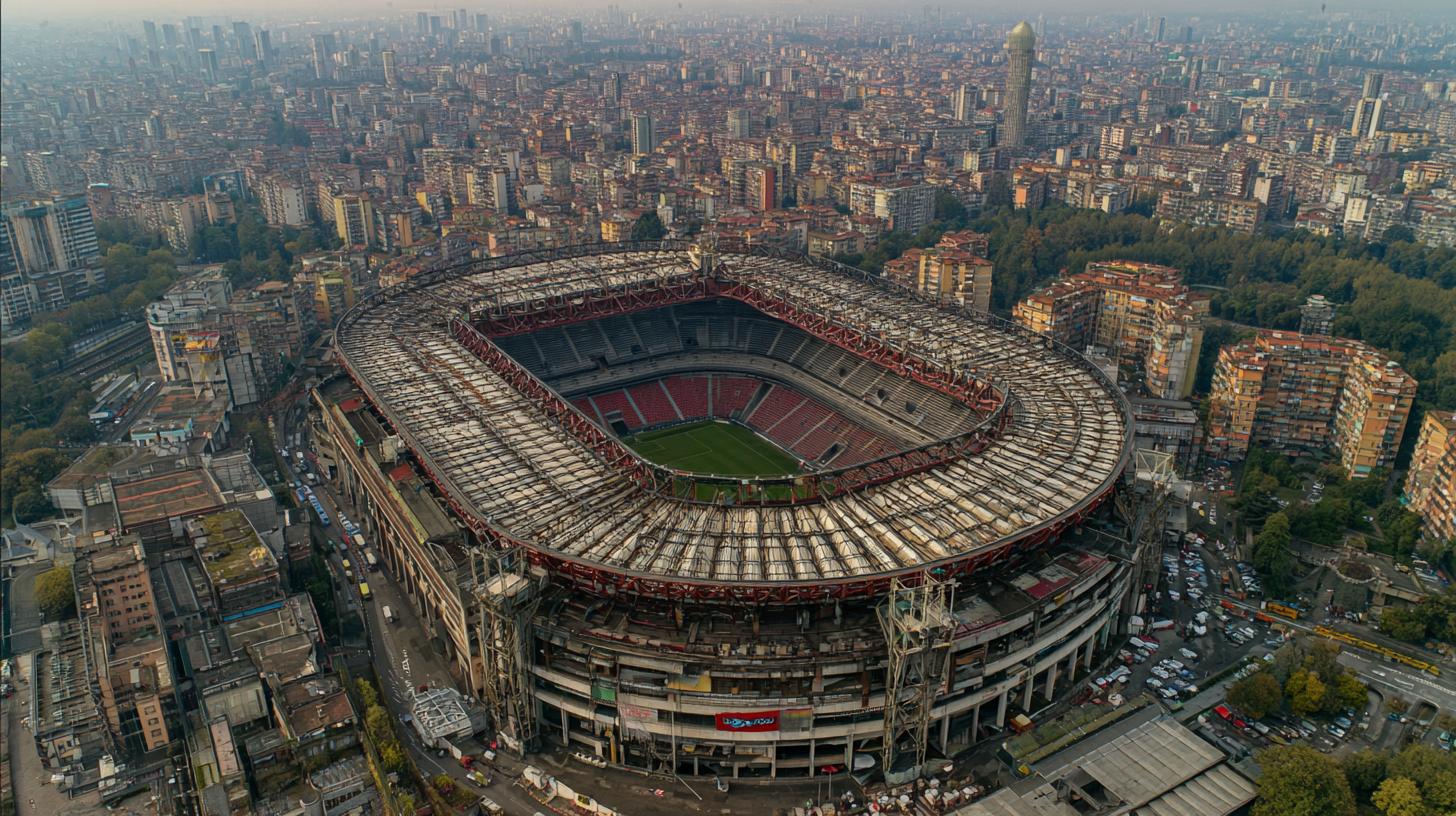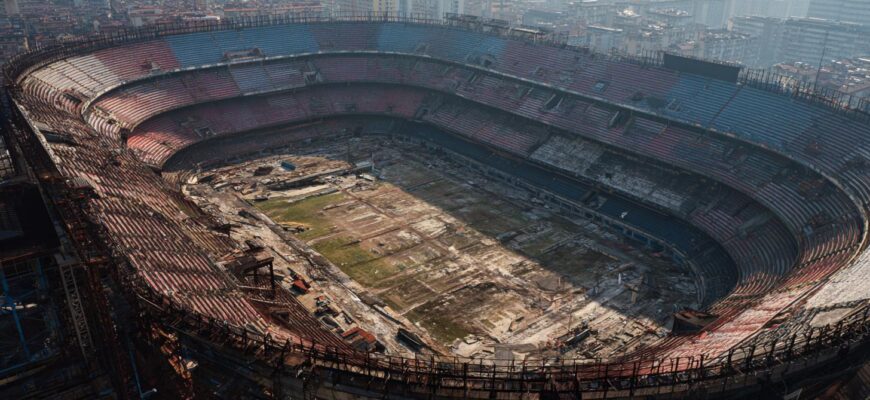The famous San Siro stadium in Milan will be demolished. For decades, that name summoned red-and-black and blue-and-black passions, blaring vuvuzelas, and nights that felt electric. Now a very different conversation is under way — one where planners, fans, politicians, and preservationists argue over memory, money, and what modern sport must look like.
- A stadium with a million stories
- Key facts at a glance
- Why demolition is on the table
- The controversy: heritage vs. progress
- Stakeholders and their priorities
- What could replace San Siro?
- Lessons from other stadium rebuilds
- Economic ripple effects
- Community and cultural considerations
- Can anything be saved?
- Personal reflections from a fan
- Environmental and logistical realities
- A practical timeline and what to expect
- What supporters and skeptics should watch for
- How to make a voice heard
- Final thoughts on a complex transition
A stadium with a million stories
Opened in 1926 and later renamed Giuseppe Meazza in honor of the great Milanese striker, San Siro has been more than brick and steel. It has been a theatre for football’s great moments, a landmark in Milan’s urban fabric, and a place where generations marked birthdays, heartbreaks, and triumphs.
Its soaring red girders, distinctive spiral ramps, and cavernous tiers created a sound chamber unlike many others. Those physical characteristics are part of why debates about demolition become so personal — they are about more than seats and sightlines; they are about textures of lived experience.
Key facts at a glance
Below are quick facts about the stadium to ground this discussion in concrete details rather than nostalgia.
| Item | Detail |
|---|---|
| Official name | Stadio Giuseppe Meazza (San Siro) |
| Opened | 1926 |
| Primary users | AC Milan and Inter Milan |
| Capacity | Approximately 75,000–80,000 (varied over decades) |
| Notable uses | Domestic and European football, World Cup matches, large concerts |
Why demolition is on the table
Practical pressures are at the heart of the conversation. Maintaining a 90-year-old stadium to modern standards is expensive, and many of the comforts fans now expect — private boxes, hospitality suites, premium seating, and modern concessions — are difficult to retrofit into the existing shell.
Clubs, like any modern entertainment businesses, chase revenue streams beyond ticket sales: naming rights, year-round events, and corporate partnerships. A new stadium promises those opportunities by design, with technology, sightlines, and facilities that a heritage structure cannot easily provide.
Beyond money, safety and accessibility requirements have evolved. Bringing the site up to current seismic, fire, and accessibility codes can be disproportionately costly compared to constructing a modern arena built from contemporary standards.
The controversy: heritage vs. progress
When talk turns to demolition, the debate becomes moral as much as technical. Many supporters of preservation argue that San Siro is part of Milan’s collective memory and deserves protection as historic architecture. These voices include everyday fans, local residents, and conservationists.
On the other side are pragmatists who point to examples of stadiums replaced to international acclaim, and to the broader urban benefits a redevelopment can deliver: improved transport links, green space, and economic activity in nearby neighborhoods. It’s a classic conflict between sentimental value and pragmatic planning.
Municipal government has to weigh public sentiment alongside zoning laws, economic projections, and the legal frameworks that govern heritage protection. That makes the issue as much a political chess game as a cultural discussion.
Stakeholders and their priorities
Many different groups have a stake in what happens. Fans want atmosphere and identity; clubs seek financial viability; the city wants jobs, tax revenue, and urban improvement; developers see opportunity; conservationists see loss. Each voice is legitimate and pushes the outcome in different directions.
- AC Milan and Inter Milan: revenue, modern facilities, global branding
- Local residents: quality of life, neighborhood impact, traffic
- Fans: tradition, matchday atmosphere, access
- Preservation bodies: architectural value, cultural heritage
- City administration: urban regeneration, economic strategy
What could replace San Siro?
Plans discussed publicly and privately often include a modern stadium with a smaller but more upscale capacity, surrounded by mixed-use developments. That model pairs a stadium with retail, housing, offices, and public spaces to create revenue streams even when matches are not taking place.
Other proposals emphasize open green space: turning part of the site into a park that reconnects neighborhoods and offers recreational facilities. Some hybrid ideas attempt to preserve the most iconic architectural elements while integrating them into a new urban scheme.
None of these options is cost-free or guaranteed to satisfy all parties. Designing a replacement that honors the past while meeting 21st-century needs is a delicate balancing act.
Lessons from other stadium rebuilds
History supplies useful precedents. London’s old Wembley was demolished and rebuilt as a modern national stadium, creating a world-class venue that also generated mixed reactions about the loss of the original structure. In New York, old Yankee Stadium was replaced by a new facility with a museum preserving artifacts and memories.
These examples show two possible approaches: full replacement with a commemorative museum, or careful preservation and adaptive reuse. Both can succeed, but both require upfront planning to secure funding and to honor history without freezing it in time.
Economic ripple effects
Demolition and redevelopment will have direct economic consequences. Short-term: construction jobs, contracts for local firms, and disruption for nearby businesses. Long-term: potential increases in property values, new retail and hospitality income, and greater year-round use of the site.
Yet promises of growth are rarely automatic. They demand robust planning to ensure benefits accrue to local residents rather than simply boosting the coffers of outside investors. The distribution of gains will shape public support and the legacy left by the new development.
Community and cultural considerations

Stadiums are communal spaces where rituals form. Singing terraces, banned flares, scarf-waving, and the smell of chestnuts in winter are not contractual elements; they are cultural practices shaped by place. Losing that physical locus reshapes how a fan community expresses itself.
Local clubs and community groups may negotiate for community facilities in any redevelopment: youth playing fields, social centers, or museums dedicated to club history. These elements can soften the transition and ensure that the site continues to serve residents, not just commercial interests.
Can anything be saved?
Architects and conservators often propose partial preservation: salvaging façades, retaining iconic ramp structures, or integrating fragments into the new design. Such compromises can preserve visual continuity while allowing for modern engineering beneath the surface.
Another route is to create a dedicated museum or memorial on-site that archives the stadium’s history: trophies, jerseys, oral histories, and multimedia installations. That becomes a living repository where fans can reconnect with the past even as the neighborhood changes.
Personal reflections from a fan
I remember my first trip to San Siro as a visitor: the crush of fans, the towering ramps, and the way sound rolled across the tiers like a tide. Standing there, being part of that shared moment, made the architecture feel like a character in the story, not just a backdrop.
From conversations with longtime season-ticket holders, the same thread emerged: they worry that modern stadiums lose unpredictability and raw atmosphere. Fans who fear sanitization of matchday experiences often resist change more than they oppose infrastructure improvements.
Environmental and logistical realities
Demolition is not only emotional and financial; it’s environmental. Deconstruction produces waste and requires careful planning to salvage materials where possible, minimize carbon emissions, and manage traffic during the work. Modern construction standards, however, can deliver much more energy-efficient buildings over the long term.
Transport links and urban mobility must also be considered. A new facility may require upgraded tram lines, parking strategies, and crowd-management systems to reduce neighborhood disruption and make matchdays safer and more pleasant.
A practical timeline and what to expect
Timelines vary, but a typical process includes several phases: planning and approvals, demolition and site preparation, construction of the new stadium, and final commissioning. Each phase can take a year or several, depending on scale and legal hurdles.
- Feasibility studies and public consultations
- Design proposals and city approvals
- Demolition and site remediation
- Construction and phased opening
Expect public hearings and legal challenges along the way; major urban projects seldom move in a straight line.
What supporters and skeptics should watch for
Transparency in planning documents, robust environmental assessments, and guarantees of public access to community benefits will be key indicators of a responsible project. Conversely, rushed approvals, opaque contracts, and short-term profit motives are red flags.
Fans should watch ticketing and pricing structures proposed for the new stadium to ensure long-standing supporters are not priced out. Local residents should monitor zoning changes and developer commitments to affordable housing and public amenities.
How to make a voice heard
Community engagement matters. Attend public meetings, join fan associations, and sign petitions that are constructive rather than purely oppositional. Reasoned proposals — for example, asking for a museum space or a memorial plaza — can carry weight in negotiations.
Lobbying municipal representatives and working with heritage bodies to identify what features are historically significant will help focus conservation efforts where they have the most value.
Final thoughts on a complex transition

Whether you see the demolition as inevitable progress or the erasure of a beloved landmark, this moment is about choices. Those choices will mark Milan for decades: how the city balances commerce with culture, growth with public good, and innovation with memory.
San Siro’s story need not end in sentimentality. With careful planning, community engagement, and creative design, the city can honor what was while building something that serves future generations in new ways. The work ahead is difficult, but it offers an opportunity to craft a successor that carries the spirit of San Siro into the 21st century.
Please visit https://themors.com/ and read other materials from our website to follow updates and deeper coverage on this topic.









